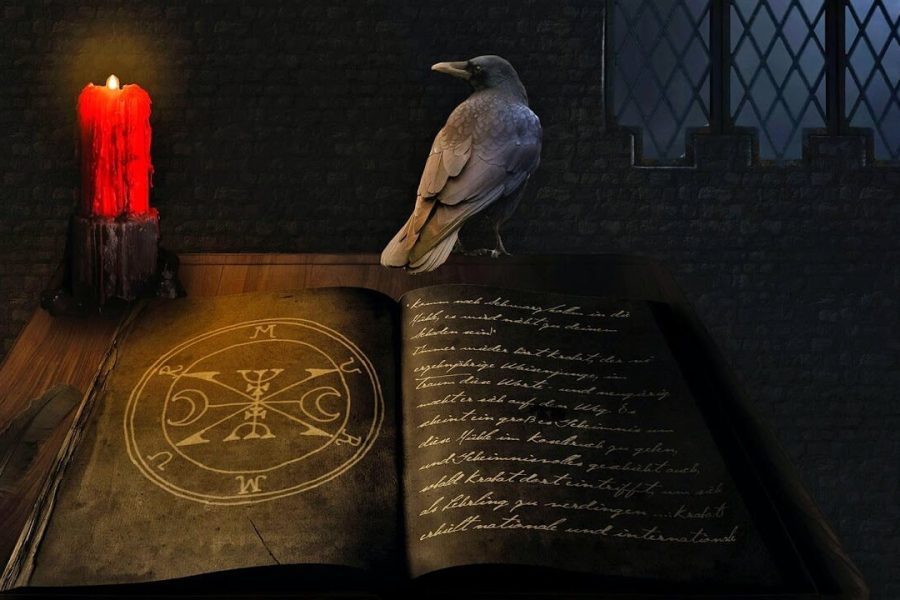The British Empire was the largest empire in human history, encompassing about a quarter of the world's total land area and population at the height of its power. During this time, numerous priceless cultural artefacts from around the world were confiscated and taken to be displayed in British museums or sold to private collectors, where they remain to this day.
10. Gviagal Shield
The Gweagal shield is a traditional shield made by the Aboriginal people of Australia. It is believed to have been used for ceremonial and defensive purposes before being captured by a native fighter during James Cook's 1770 expedition to the south-east coast of Australia. According to some accounts of the encounter, a group of Gweagal warriors encountered Cook's landing party on the beach and were defeated. However, other accounts claim that Cook ordered his men to open fire after they were attacked, prompting them to strike back.
Whatever happened that day, the shield, along with the osprey and several other items, was captured by Cook and taken back to England. It is still kept in the collection of the British Museum in London, along with several other items stolen by Cook and his men from the Indigenous Australians during their early voyages to the continent.
9. Benin Bronzes
Before the British expedition to Benin in West Africa in 1897, it was one of the oldest and most developed regions in the world. The capital, Benin City, was said to be larger and better built than most European cities of the time, with city walls four times longer than even the Great Wall of China. The empire was particularly renowned for its exquisite art, including the famous Benin Bronzes, a collection of thousands of works of art created using the lost-wax casting technique. It is estimated that around 4,000 of these objects, including sculptures, plaques and other decorative objects, were produced by skilled artisans from across the region.
Unfortunately, all this came to an abrupt end in February 1897, when the city was captured and sacked by 1,200 British troops under the command of Sir Henry Rawson. It was a brutal punitive campaign that resulted in the looting of almost all of the royal palace’s priceless artefacts, including the bronzes. They were taken back to Britain and sold to museums and collectors around the world, with most now in private and public collections in Europe.
8. Moai
Moai statues are monolithic sculptures made by people from Easter Island, a Chilean territory located in the southeastern Pacific Ocean. The figures, made from compressed lava ash, are believed to represent deceased ancestors and are important to the culture of the Rapa Nui people.
One of the most famous of these statues is Hoa Hakananaia, which translates as “the stolen or hidden friend.” Standing almost 2.5 meters tall and weighing around four tons, it was captured by the British Navy and taken to the British Museum in London during the 1868 campaign, where it remains today. Despite being on display in London for over 150 years, Hoa Hakananaia remains an irreplaceable artifact in Rapa Nui culture.
7. Hevea brasiliensis seeds

This mixes things up a bit because we're not talking about a specific artifact. We are, however, talking about taking something monumentally important to another part of the world. You see, in the late 1800s, demand for rubber was growing rapidly around the world, especially in Europe and the United States, where it was used to make tires, clothing, and various other products. The rubber industry in Brazil and the larger Amazon region was booming, as the government strictly controlled the trade and banned the export of rubber seeds.Brazilian , a rubber producing company from the region.
In 1876, an explorer and naturalist named Henry Wickham was hired by the British government to do something about it. After months of preparation and behind-the-scenes dealings with local tribes, Wickham managed to smuggle some 70,000 rubber tree seeds from Brazil to England. This was a turning point in the history of the global rubber trade, as it allowed British planters and traders to plant the seeds in colonies like Ceylon and Malaysia. By 1913, Britain had overtaken Brazil as the world’s leading rubber exporter.
6. Parthenon Marbles
The Parthenon Marbles, also called the Ergina Marbles, are a collection of sculptures and architectural elements that once adorned the Parthenon, a temple dedicated to the goddess Athena in Athens, Greece. The artifacts, made sometime in the 5th century BC from Pentelic marble and limestone, depict various scenes from Greek mythology, including battles, religious ceremonies, and the birth of Athena.
The marbles originally belonged to the city of Athens, although in 1801 Lord Elgin, a British diplomat, received permission from the ruling Ottoman Empire to remove them and ship them to England. They were then purchased by the British government and are now on display in the British Museum. This is despite several calls from the Greek government to return them, as they were allegedly taken from Athens without their consent, while the British Museum claims they are part of their collection and are better preserved in London.
5. Tipu the Tiger
Tipu's Tiger refers to an automaton made for Tipu Sultan, ruler of Mysore in southern India from 1782 to 1799. Built in 1793 in the form of a life-size tiger attacking a European soldier, it was both an impressive automaton and a powerful symbol of local resistance to the British. The tiger could even reportedly make realistic growls and roars as the man screamed in agony.
The tiger remained in Tipu's possession until 1799, when British forces defeated and killed him during a military campaign. Today, it is on display at the Victoria and Albert Museum in London, along with many other valuables taken from Tipu's palaces in southern India.
4. Maori heads
From 1769 to the 1970s, thousands of ancestral remains belonging to the Maori and Moriori people of New Zealand were taken from the country and sold to private collectors, museums and medical institutions around the world. The most prized of these are the moko, or tattooed heads of famous leaders, family members or vanquished enemies, which local communities keep as souvenirs.
The first trade in toi moko was recorded as having been made by a member of James Cook's party, Sir Joseph Banks, sometime in 1769. They soon became sought after in Europe and beyond for their elaborate decoration and cultural value, leading to a gold rush of sorts, but instead of gold, it was mummified tattooed heads. The ever-growing global demand for the artifacts, which peaked in the 1800s and 1820s, directly led to several conflicts and violent clashes between settlers and locals. Although many have been returned to New Zealand as part of the government's efforts to repatriate national treasures, thousands remain hidden in private collections around the world.
3. Rosetta Stone

The Rosetta Stone is a granodiorite stele created during the Ptolemaic period of ancient Egypt. A stele was essentially a large, ornate stone slab used in Egypt to commemorate important events or people. In this case, the Rosetta Stone was part of a larger collection of steles produced by a council of priests in 196 BC.
The Rosetta Stone is unique for many reasons, including the fact that the information inscribed on it is written in two languages—Egyptian and Greek—and three other writing systems—hieroglyphs, demotic, and the Greek alphabet. Specifically, the text relates to a royal decree of charity issued by King Ptolemy V to celebrate his coronation.
It was discovered by a French soldier named Pierre-François Bouchard during the French occupation of Egypt in 1799, and then captured by the British in 1801 following their victory in the Napoleonic Wars. The Rosetta Stone was eventually transported to England and donated to the British Museum in London, where it remains on display today.
2. Ethiopian tabots
Ethiopian tabots, or tablets, are sacred objects made of wood or stone that represent the Ark of the Covenant. They are an important part of the Ethiopian Orthodox Church, an institution that existed before the European colonization of Africa, and are only meant to be viewed or handled by their priests. There are said to be 44 tabots, each representing a different church or region in Ethiopia.
However, 11 of them are now in the British Museum as part of its extensive collection of historical and cultural objects from around the world. They were taken during the British expedition to Abyssinia in 1868, when British soldiers looted a number of valuable artefacts from the imperial treasury and transported them back to London. Since then, the Ethiopian government has made several attempts to return them to the country, but without much success.
1. The Great Star of Africa
Weighing 3,106 carats and measuring approximately 4 x 2.5 x 2.3 inches, the Cullinan Diamond was the largest pure-cut diamond ever found. It is named after Sir Thomas Cullinan, owner of the Premier Mine near Pretoria, South Africa, where it was discovered back in 1905. The Cullinan Diamond was later cut into several smaller stones, the largest of which was the 530-carat Great Star of Africa, also known as Cullinan I.
The Great Star of Africa, along with other pieces from the Cullinan set, is currently mounted on the Sovereign's Sceptre as part of the British Royal Family's Crown Jewels. Over the years, South Africa has made several demands for the diamond's return, but the British government has rejected them all, usually citing legal and historical reasons.













Оставить Комментарий